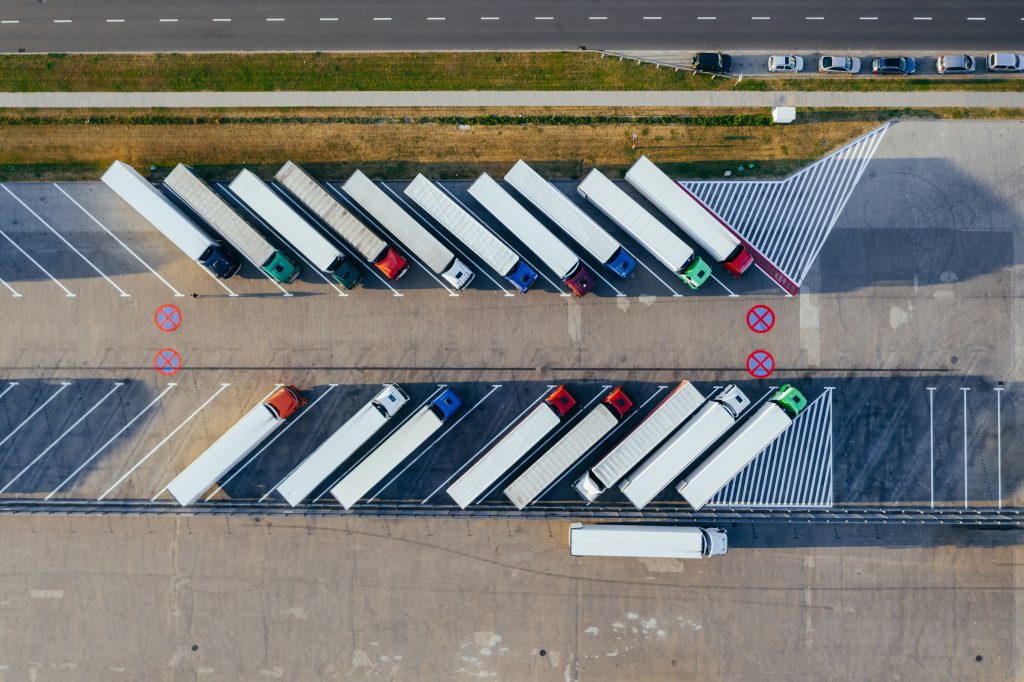The goals of logistics are the provision of high-quality service, quality and cost reduction. In this respect, conflicting goals arise. For example, although a high inventory level will reduce shortage costs and increase delivery readiness, storage costs will automatically increase. The calculation of logistics costs serves here as an instrument for determining the optimum.

In general, an attempt is made to avoid unnecessary transportation. For example, a supplier may assemble several parts, as this ultimately means less transportation. When distributing goods, it can make sense to entrust a specialized company (a transport company) with this task. This then also has other clients, sometimes uses modern solutions for fleet management and can thus better avoid expensive empty runs.
Once this part is working smoothly, it is obvious that scheduling with the ordering of intermediate products and the shipping of final products must also be linked to this part. All departments have the same information basis through an enterprise resource planning system. Finally, the evaluation of all processes takes place from an accounting point of view.
Tasks
The task is pragmatically formulated by Reinhardt Jünemann (1989): “The logistical task is to provide the right quantity, the right objects as objects of logistics (goods, people, energy, information), at the right place (source, sink) in the system, at the right time, in the right quality, at the right cost.”[13] This goal is commonly referred to as the 6 Rs of logistics. A limitation to fewer than six objectives (e.g., the right product at the right time, in the right quality, and at the right place) is also commonly found under an adapted name (the 4 Rs rule). The objectives of logistics are becoming more and more demanding. Therefore, one now speaks of sept R or even of 7R+.
The tasks of logistics include the transport, handling, storage, provision, procurement and distribution of goods, people, money, information and energy, as well as their management, control and optimization. The task-based structuring of logistics is a common form, as it is used in many areas of sub-logistics (including procurement logistics,production logistics and distribution logistics).
A logistic task is among other things the transport of goods from the producer to the customer or from the salesman to the final customer. Another task is, among others, the transport of goods/materials and information within a company, e.g. the transport of goods from the warehouse to the production site, the supply of employees with information and working materials, etc. Thus, the various disciplines of logistics are more or less dependent on the efficiency of the infrastructure of companies, cities, etc., but also on technological systems.
One of the tasks of distribution logistics is timely planning with regard to general traffic bans, public holidays and time restrictions. It is supplemented by the preparation of transport documents in compliance with social regulations for road transport by the planner and by securing, preparation and control of goods or commodities during their storage. Another task is the transportation of heavy loads (goods with unsuitable dimensions and/or weights) or the transportation and storage of dangerous goods for which there are certain extended legal requirements. These include exemptions and the provision of escort vehicles, including the correct relocation of the hazard marking on the vehicle that is to carry out this transport. For other areas, CEMT permits are required in addition to customs regulations. Special attention is paid to intra-Community deliveries.
The planner also decides whether piggyback or intermodal or multimodal transport is appropriate, or which mode of transport should be chosen and by which route.
The areas of logistics
Logistics provides customer- and process-oriented solutions for overall and subsystems in companies, corporations, networks and virtual enterprises. Logistics (in the economic sense: movement of goods) combines the corporate areas of warehousing and transportation. Under the pressure of labor costs and with the help of an enterprise resource planning system, it was necessary and possible to combine these two areas under a common strategy.




